In a post covid world – there was good news for commercial real estate investors in terms of mortgage rates. Mortgage rates have hit the lowest, and thus it is not surprising that there have been a flooding number of mortgage refinancing applications submitted in 2020.
On August 6, Freddie Mac data showed a 30-year mortgage rate that had reached an all-time low of around 2.8 %. Such data is definitely encouraging many commercial real estate investors to apply for mortgage refinancing. If you’re considering refinancing your mortgage, you might want to look into how much you could save.
Although this might seem like a no-brainer – it is not easy to determine how much exactly one could save by refinancing a mortgage. This is a matter of long-term savings as well. In this blog, we will walk you over how much you could save by refinancing your mortgage in 2021 in a post-Covid world.
How much could you save every month?
How much you could save every month is rather easy to determine. Determine how much of your current loan payment is principal cum interest. You can find this amount easily on your latest mortgage statement, and if you cannot, you can subtract your monthly escrow payment from the total mortgage payment.
After this, figure out how much would make your monthly mortgage payment me if you choose for a new mortgage with better rates. If you obtain a refinancing loan or get a mortgage refinancing pre-approved by a lender, then you can ask your lender to do this part for you.
This is your potential new monthly mortgage payment. Subtract this potential new payment from your current mortgage payment, and that would give you your monthly savings. This amount is what you could save every month.
That was simple, right? While you are thinking about refinancing your mortgage, what you could save in the long run should actually determine your decision to refinance your mortgage.
How much could you save in the long run?
Determining this part is where it gets a little tricky and complicated. Hiring an expert if you cannot run these calculations yourself is a good decision to avoid making inaccurate estimations and refinancing a loan that might not prove to your benefit.
When you refinance your old mortgage, you – generally do so by replacing it with a new 30-year mortgage. However, you should know that the old mortgage or replacement will still have some other repayment terms.
For instance, let us assume that you have completed five years into a $300,000 mortgage that carries an interest rate of 4%. Your monthly principal cum interest payments, in this case, would be $1,433, and you still have around $271,000 about your original mortgage balance.
Further, let us assume that you decide to obtain a new 30-year mortgage which carries an interest of 3% and around $3,000 for closing cost to refinance the remaining balance mortgage payments by around $250.
The long-term comparison of both the loans:
If you choose not to refinance your old mortgage and continue with your original mortgage, you will be making a 1433 dollar monthly payment for another 20 years, which sums up to a total of around $429,000.
On the other hand, if you choose to refinance your mortgage, you will be making monthly payments of around $1,180 for 30 years. Add the $3000 closing costs to this, and your new total would be $427,000 approximately.
Thus, if you examine closely, you will realize that, you are saying around $2100 in the long run by refinancing your old mortgage. It is still the cheaper option, and it can help you reduce your monthly costs significantly.
However, at the same time, you should know that it isn’t a very dramatic amount of savings in the long run as opposed to what you might think when you are comparing individual monthly payments.
Does it be strongly advised not to decide whether or not to refinance your old mortgage solely based on your monthly payouts?
As an informed investor, it is important to make an informed decision about whether or not to refinance your mortgage by looking at your mortgage payments both in terms of monthly payouts and in the long run. Looking at the holistic and the big picture view is very important.
It’s not this simple every time.
Every loan situation is not the same, and thus, you cannot conclude that every mortgage financing situation is as easy to evaluate as we illustrated stated above. This is specifically true when you are evaluating long-term savings.
In the case of a cash-out refinance, which means that your new mortgage will have a higher principal balance than the old one, which it replaces – the calculations become different.
Every lending situation is different, and looking at your decisions by comparing everything is detrimental in the long run. Hiring a commercial real estate loan expert to carry out these calculations and suggest you in your decision-making is highly recommended.
The take-away:
The conclusion could be that while mortgages have become cheaper now than they’ve ever been before, it does not lead to straightforward conclusions or consequences about your lending options.
While refinancing your old mortgage might seem like a very lucrative option, it might not always be so when you look at it from “the long-run perspective.”
Carrying out your own individual calculations and then making a decision is important rather than believing in the trend and making half-informed decisions.
If your commercial refinances mortgage lender is offering you a rate that is significantly much lower than your original mark age, and you are also planning to stay in your home for many years to come – then this could be the best time for you to refinance your old mortgage.
However, you need to know that this is not a one size fits all solution, and it might not be lucrative for every lender out there. Examining what commercial refinancing might be for you, given your individual loan preferences and risk appetite, is very crucial. If you decide to refinance your old mortgage, searching for the best rates in the market is easier now than ever before.
Without a plethora of private lenders offering good commercial refinance mortgage rates – this might be the best time for you to foster new to lender borrow relationships, and access great deals on mortgage refinancing.





